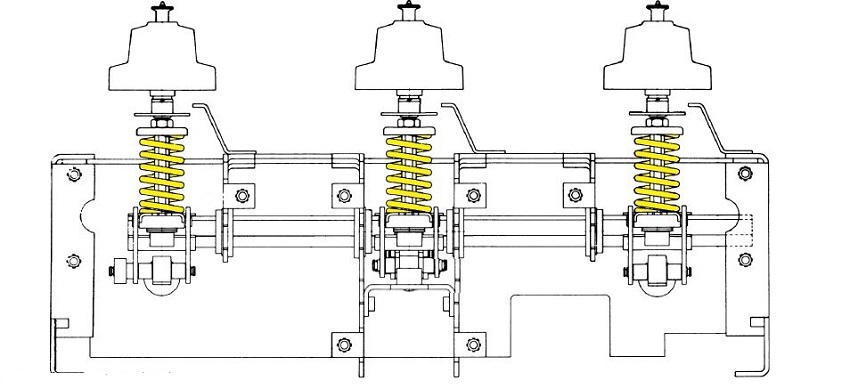
On a MVVCB, wipe is the additional over travel of the mechanism past closing the butt contacts inside the VI. The energy stored in the closing springs of the circuit breaker mechanism provides a set amount of motion, and during a closing operation the first portion of this motion is used to rapidly close the VI contacts
The remaining mechanism travel, known as wipe, is used to compress a preloaded spring, shown in yellow in Figure to apply and maintain a constant force on the VI contacts while the breaker is closed.
Wipe has three main purposes:
- to provide a means to compensate for contact erosion over time
- to provide a force which forms the contacts to one another to maintain a low contact resistance
- to counteract the “popping”, or “blow-off” force caused when a large amount of current travels through the
contacts. As the contacts inside the VI erode over time, the additional stroke in the mechanism ensures that the contacts are able to fully close, which in turn decreases amount of wipe
by applying a large force on the contacts during a closing operation, the contacts form to one another and the resistance can be minimized to allowable values.



